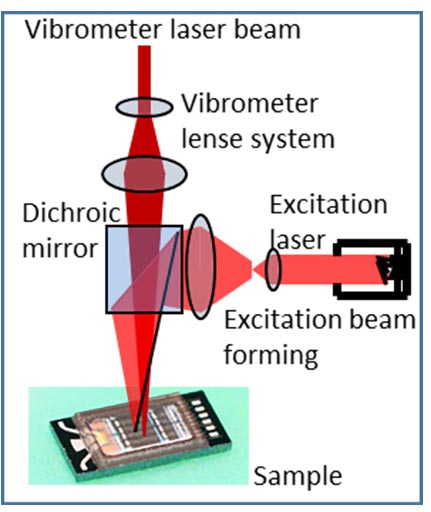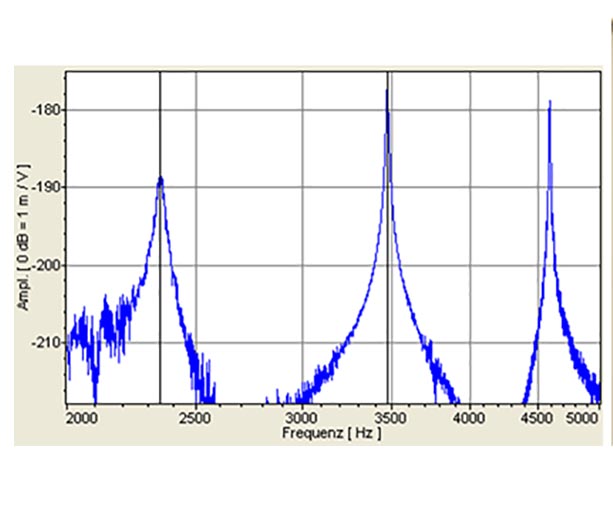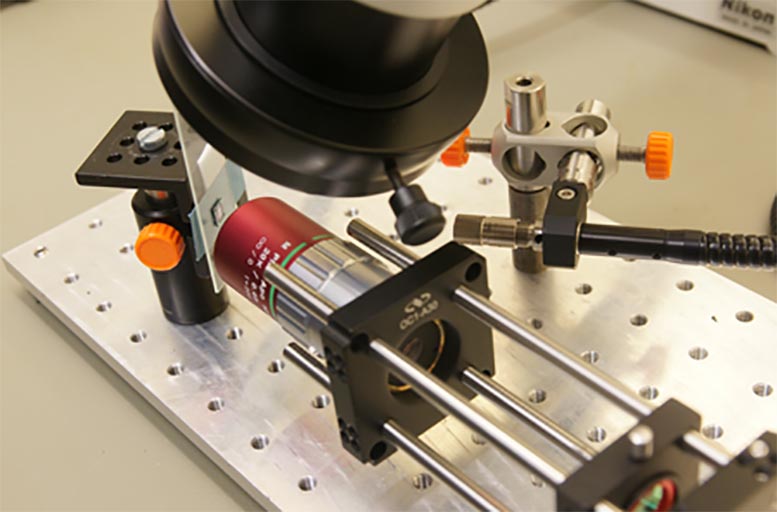Thermo-mechanic excitation of encapsulated MEMS components
When testing the mechanical properties of MEMS, typically the motion of the movable parts of the MEMS components is observed while the structure is mechanically stimulated to vibrate. The resonant frequencies and Q values are determined, which indicate fabrication tolerances. Beside the commonly used excitation techniques for MEMS components by integrated transducers, by vibration chucks or external electric fields provided by electrostatic probes, thermomechanical excitation comes into view when using an intensity modulated laser source. Light or infrared radiation can be applied for the contactless excitation. In the case of encapsulated MEMS with a silicon cap, an infrared laser radiating in near infrared wavelength range is the best choice. Fraunhofer ENAS developed together with project partners from the industry and academia a laser based thermo-mechanic excitation principle that is used in combination with a laser Doppler interferometer. The beam of a directly modulated laser diode is collimated and directed to the microscope objective of the laser doppler interferometer by a beam steering optics and a dichroic beam splitter. The beam steering enables adjusting of the excitation laser spot to a dedicated location of the inner structure of the MEMS. Testing of the measurement set-up with different MEMS devices showed a good signal/noise ratio at the resonant frequencies of the MEMS structure. The resonance frequencies and the Q values can be determined easily.
 Fraunhofer Institute for Electronic Nano Systems
Fraunhofer Institute for Electronic Nano Systems

